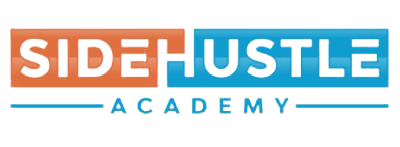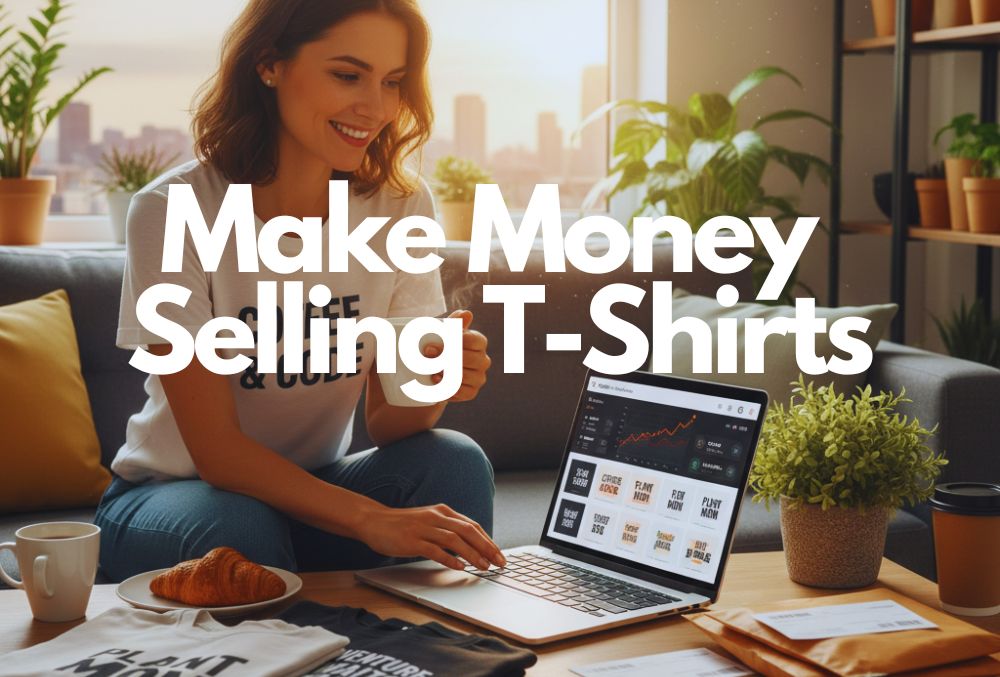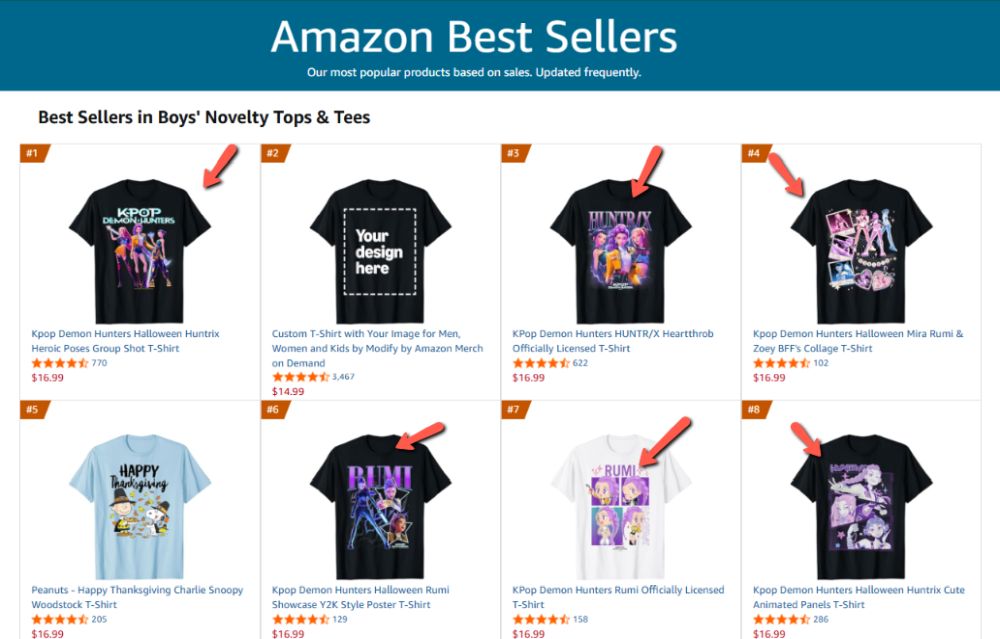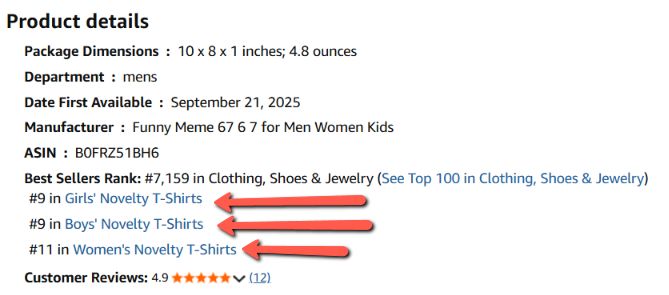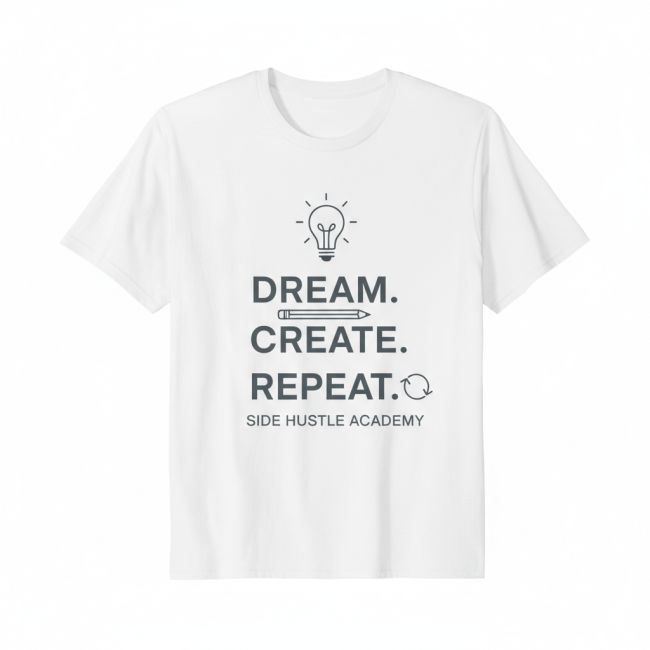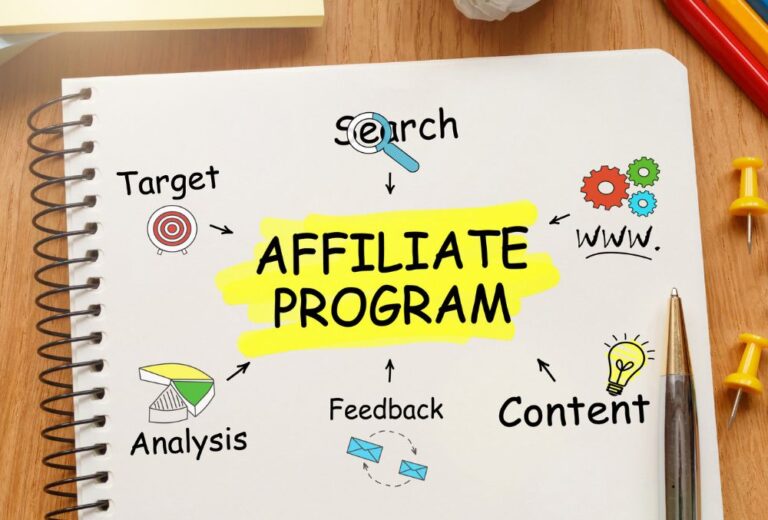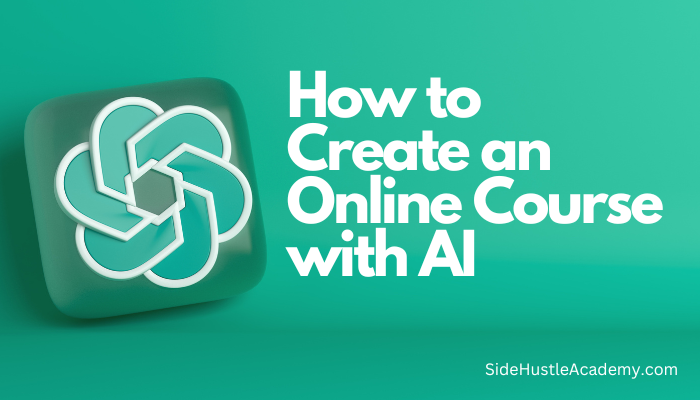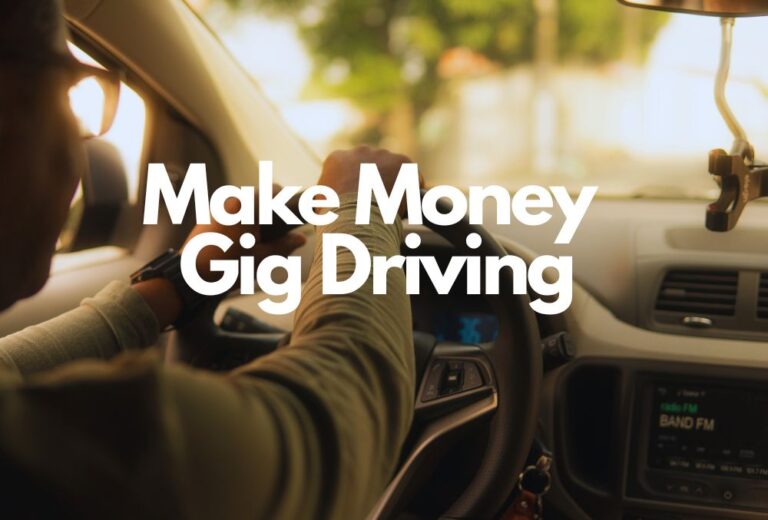Make Money Selling T-Shirts Online – A Step by Step Guide
Here’s something wild: you can make money selling t-shirts online, building your empire from your laptop without ever touching a single piece of fabric, renting warehouse space, or dealing with shipping nightmares. I know what you’re thinking—sounds too good to be true, right? But here’s how it works.
Print-on-Demand websites allow you to make money selling t-shirts online. Start by finding a solid print-on-demand platform, creating t-shirt ideas with Canva, hiring a freelancer, or creating ideas with ChatGPT and Gemini. Next, find a platform to sell your shirts on, like Shopify or Etsy, and price them competitively. Finally, market your shirt on social media, email your list, or set up ads to get the word out.
Whether you’re looking to build a passive income t-shirt business on the side or you’re ready to dive headfirst into t-shirt ecommerce as your main gig, I’m going to walk you through exactly how to make this happen. No fluff, no unrealistic promises—just the real deal on how to sell t-shirts online without inventory.
What Exactly Is Print-On-Demand and Why Should You Care?
Let’s start with the basics.
Print-on-demand (POD) is essentially a business model where you create designs, list them for sale, and only when someone actually buys your shirt does the product get printed and shipped—directly from the supplier to your customer.
Think of yourself as the creative director and marketing genius, while someone else handles all the boring operational stuff. It’s like having a silent business partner who does all the heavy lifting while you focus on what actually matters: creating designs people want to wear and getting those designs in front of the right audience.

The magic here is simple. A customer visits your online t-shirt store, falls in love with one of your designs, places an order, and pays you.
The order automatically gets sent to your print-on-demand fulfillment partner, who prints the shirt, packages it, and ships it to your customer—all with your branding. You pocket the difference between what the customer paid and what the POD service charged you. Clean, simple, scalable.
Here’s why this model is absolutely brilliant:
The overhead is practically nonexistent. You’re not gambling on what designs might sell or ordering 500 units of something nobody wants. There’s no risk of dead inventory eating away at your bank account. You can test dozens of designs without financial commitment. If something doesn’t resonate with your audience, you simply move on to the next idea.
Plus—and this is huge—you can operate this business from literally anywhere. Beach in Bali? Your parents’ basement? A coffee shop in Brooklyn? Doesn’t matter. As long as you’ve got WiFi and a laptop, you’re in business.
Step 1: Choose Your Print-On-Demand Platform (This Decision Matters)
Your first real decision is picking which print-on-demand t-shirt companies you’ll partner with. This isn’t something to rush through because different platforms offer different advantages, and the one you choose will impact everything from your profit margins to product quality to shipping times.
Let me break down the heavy hitters:
1. Printful
Printful is basically the Mercedes-Benz of print-on-demand platforms. Their quality is consistently excellent, they integrate seamlessly with virtually every major ecommerce platform (Shopify, Etsy, WooCommerce, you name it), and their mockup generator is ridiculously easy to use.
The trade-off? Their prices run slightly higher than competitors, which means thinner margins unless you price accordingly. But in my experience, the quality justifies the cost—and happy customers mean repeat business.
2. Printify
Printify takes a different approach. Instead of printing everything themselves, they connect you with a network of print providers. This gives you more options and competitive pricing, but quality can vary depending on which provider fulfills your order.
The platform itself is incredibly user-friendly, and if you’re price-conscious, this might be your best bet for maximizing those profit margins.
3. Merch by Amazon
Then there’s Merch by Amazon, which is like getting a golden ticket to the world’s biggest marketplace. When you’re approved for their program, your designs get listed directly on Amazon with Prime eligibility. The catch? There’s a waiting list to join, and Amazon takes a bigger cut. But the trade-off is exposure to millions of potential customers who are already in buying mode.
4. Redbubble & TeePublic
Redbubble and TeeSpring are marketplace-style platforms where artists upload designs, and the platforms handle everything—including marketing to some degree. The downside is less control over pricing and branding, but if you’re dipping your toes in, these can be perfect starting points.
For most beginners, I’d recommend starting with Printful or Printify connected to your own Shopify or Etsy store. This gives you the best balance of control, quality, and learning opportunities.
| Platform | Best For | Integration | Pricing | Quality |
|---|---|---|---|---|
| Printful | Quality-focused brands | Excellent | Higher | Premium |
| Printify | Budget-conscious sellers | Excellent | Lower | Variable |
| Merch by Amazon | Maximum exposure | Built-in | Medium | Good |
| Redbubble | Passive income | Built-in | Lower margin | Good |
| Teespring | Campaign-based sales | Built-in | Medium | Good |
Step 2: Set Up Your Online T-Shirt Store (Easier Than You Think)
Now comes the fun part—building your digital storefront. Don’t let this intimidate you. With modern platforms, you can have a professional-looking online t-shirt store up and running in an afternoon.
Shopify
If you’re going the Shopify route (which I recommend for most people), you’re looking at about $29/month for the basic plan.
The interface is incredibly intuitive, and there are literally thousands of tutorials if you get stuck.
Install a POD app like Printful or Printify, pick a clean theme (keep it simple—nobody wants to navigate a cluttered mess), and you’re basically good to go.
Etsy
Etsy is another fantastic option, especially if you’re targeting the handmade and custom market. The platform already has millions of shoppers actively searching for unique designs, and setting up shop costs just $0.20 per listing.
The trade-off is that you’re competing in a crowded marketplace, but the built-in traffic can be worth it. Just make sure to integrate a print-on-demand solution like Printful to handle fulfillment.
Free Platform Options
Free options exist, too. Platforms like Teespring and Bonfire let you create stores without any upfront costs. You upload designs, share your store link, and they handle everything else.
The margins are slimmer since these platforms take a bigger cut, but if you’re testing the waters before committing financially, this is a solid starting point.
Here’s my take: don’t overthink your store design. I’ve seen people spend weeks obsessing over the perfect color scheme while never actually launching. Get a clean, mobile-friendly design up, make sure your navigation makes sense, and move on. You can always refine later based on customer feedback.
| Platform | Type | Built-in POD? | Typical fees/costs | Best for |
|---|---|---|---|---|
| Shopify | Storefront (hosted e-commerce) | No (connects to POD apps like Printful, Printify) | Monthly subscription (starts ~$29/mo), plus payment processing (card rates) and Shopify transaction fees if not using Shopify Payments. Apps (Printful, etc.) are free to install, but product cost + shipping is paid per order. | Full control of branding, custom domain, best for brand stores |
| Etsy | Marketplace | No (many sellers use POD integrations) | Listing fee per item ($0.20), transaction fee (~6.5%), payment processing (~3% + fixed) — add POD product cost per sale. (Fees can vary by country.) | Sellers who want marketplace exposure and gift/niche buyers |
| Merch by Amazon | Marketplace (Amazon) | Yes — Amazon handles printing & fulfillment | No listing fee; platform takes a cut/charges platform fees, which reduce the artist margin (artists set markup). Exact payout/fee structure and tiers vary; many sellers treat Redbubble as production + marketplace. (Redbubble) | Sellers wanting passive reach to Amazon customers |
| Redbubble | Marketplace | Yes — built-in production & fulfillment | No listing fee; platform takes a cut/charges platform fees, which reduce the artist’s margin (artists set markup). Exact payout/fee structure and tiers vary; many sellers treat Redbubble as production + marketplace. (Redbubble) | Artists who want plug-and-play listings and exposure |
| TeePublic | Marketplace | Yes | No upfront cost; payout is a margin/royalty after base cost; frequent site promos affect pricing/earnings | Designers wanting simple marketplace exposure |
| Spreadshirt | Marketplace + storefront options | Yes (built-in) | No listing fee; platform charges production + commission; you set your markup | Sellers who want EU distribution easily |
| Zazzle | Marketplace/custom products | Yes | No listing fee; Zazzle sets base prices and you set royalty; platform handles production and shipping | Designers of custom/gift products |
| Society6 | Marketplace (artist centric) | Yes | Artist margin model — price is platform-dependent; Society6 sets base prices | Artists selling art-first products |
| Bonfire | Marketplace + campaign storefronts | Yes (on demand via Bonfire) | No upfront; Bonfire charges base + shipping; options for campaign fundraising (free to create) | Fundraisers, community groups, creators |
| CafePress | Marketplace | Yes | Sellers want an additional distribution channel | Printful (as a seller platform) |
Step 3: Create Designs That Actually Sell (Not Just Designs You Like)
This is where most people stumble. They create designs they personally love without considering whether anyone else wants to wear them. I get it—your ideas are your babies. But if you want to make money selling shirts online, you need to think like a business owner, not just an artist.
Research is everything
Before you create a single design, spend serious time understanding what’s already selling. Browse top sellers on Redbubble, check out trending shirts on Amazon, and scroll through successful Etsy shops.
- What patterns do you notice?
- What niches seem underserved?
- What design styles keep popping up?
Here are some of the top novelty shirts for men on Amazon. Notice a pattern?
Looks like K-pop is popular. Take some time to look at multiple platforms and see what is selling. Every product on Amazon has a seller’s rank listed on its page. The lower this number, the more popular it is.
Niche down hard
The most profitable t-shirt niches aren’t “funny shirts” or “cool graphics”—they’re specific. Think “sarcastic shirts for nurses,” “vintage camping graphics for outdoor enthusiasts,” or “minimalist designs for yoga instructors.” When you speak directly to a specific group, your marketing becomes exponentially easier and more effective.
If you’re not a designer yourself (and hey, neither am I), don’t let that stop you. Platforms like Canva offer templates and drag-and-drop tools that make design accessible to anyone.
Alternatively, hire freelancers on Fiverr or Upwork to bring your concepts to life. A solid design might cost you $20-50, but if it resonates with your audience, that’s an investment that pays for itself many times over.
You could also use ChatGPT to help you come up with ideas. Just tell it to come up with 10 shirt ideas around X topic that have a funny theme to it. Then go to Google Gemini and ask it to generate an image for a print-on-demand shirt that ChatGPT came up with.
Here is just one design it created for me with about 5 minutes of work.
Here are design principles that consistently work:
Simple is powerful. Some of the best-selling shirts feature nothing more than clever text in a nice font. You don’t need elaborate illustrations if your message hits home.
Humor sells, but make it specific. Generic funny shirts get lost in the noise. Humor that speaks to a particular profession, hobby, or lifestyle cuts through.
Nostalgia is a goldmine. References to ’90s culture, vintage aesthetics, retro gaming—if it makes people feel something, they’ll buy it.
Stay away from anything that might get you in legal trouble. Don’t use copyrighted images, trademarked phrases, or celebrity likenesses unless you have explicit permission. The print-on-demand platforms will reject these anyway, and it’s not worth the headache.
Step 4: Understand the Money (Initial Investment and Profit Margins)
Let’s talk dollars and cents because this matters. One of the biggest appeals of this business model is the low barrier to entry, but you still need to understand the economics to build something sustainable.
Initial investment? Shockingly low. If you’re using a platform like Printful and Etsy, you can literally start with zero dollars. If you’re going the Shopify route, you’re looking at about $29/month plus maybe $10 for a domain name. Let’s call it $50 to get started properly—basically the cost of dinner for two at a nice restaurant.
Profit margins vary wildly depending on your platform and pricing strategy. Here’s a realistic breakdown:
A basic Gildan 5000 t-shirt from Printful costs around $9-11 to print and ship domestically. If you sell that shirt for $24.99 (a reasonable price point), you’re making roughly a $13-$ 15 profit per sale after the platform takes its cut. Sell ten shirts, and that’s $130-$150 in your pocket. Sell a hundred, and you’re looking at $1,300-1,500.
Premium blanks like the Bella + Canvas 3001 (which feels way softer and looks more upscale) might cost $12-14 from your POD supplier. Price these at $29.99, and you’re still clearing $15-17 per sale.
Quick Tip: The key is testing different price points. Don’t race to the bottom trying to compete on price alone—that’s a losing game. Focus on creating designs people genuinely want and pricing them fairly. Customers will pay for quality and originality.
Have realistic expectations: Most beginners see their first sale within the first month if they’re actively promoting. Getting to $500/month in profit is achievable within 3-6 months with consistent effort. Scaling to $2,000-5,000/month takes more work—better designs, smarter marketing, and probably advertising spend—but it’s absolutely doable.
This isn’t a get-rich-quick scheme. It’s a legitimate business that rewards creativity, persistence, and smart marketing. Treat it like a hobby, and you’ll make hobby money. Treat it like a business, and you can build something that genuinely changes your financial situation.
Below is a simple print-on-demand t-shirt profit calculator to show you how much you could make selling t-shirts.
🧮 Print-on-Demand T-Shirt Profit Calculator
Step 5: Market Your T-Shirts Like Your Rent Depends On It
Here’s the uncomfortable truth: you can have the sickest designs in the world, but if nobody knows your store exists, you’re not making a dime. Marketing isn’t optional—it’s the whole ballgame.
Social media is your best friend (and it’s free)
Instagram and TikTok are absolutely perfect for t-shirt businesses because they’re visual platforms where creative content thrives. Start posting mockups of your designs, behind-the-scenes content about your creative process, customer photos (user-generated content is gold), and anything else that showcases your brand personality.
The mistake most people make is treating their social accounts like billboards. Nobody wants to follow an account that just screams “BUY MY STUFF” all day. Instead, provide value, entertain, educate, and occasionally mention your products. Build a community of people who genuinely like what you’re about, and sales will follow naturally.
How to market t-shirts on social media effectively
Post consistently (at least 4-5 times per week). Consistency beats perfection every single time.
Use relevant hashtags strategically. Research what tags your target audience actually follows. If you’re selling shirts for dog lovers, you should be all over #dogsofinstagram, #dogmom, #puppylove, etc.
Engage authentically with your community. Reply to comments, interact with other accounts in your niche, and be a real human being.
Show the lifestyle, not just the product. Instead of a flat lay of your shirt, show someone wearing it while doing something relevant to your niche.
Here is a simple social media content calendar you can use to help you get started.
| Week | Day | Content Pillar | Content Type & Focus | Call to Action (CTA) | Platform Notes (E.g., Instagram/TikTok) |
| Week 1: Design Spotlight | Monday | Product Showcase | High-quality product image/video mockup. Focus on the best-selling design. | “Shop Link in Bio!” | Instagram Post/Reel. Use relevant product hashtags. |
| Tuesday | Engagement/Community | Poll/Question Sticker Story asking followers which color they prefer for a new design. | “Vote in the Poll!” | Instagram Story/TikTok Question Sticker. | |
| Wednesday | Behind-the-Scenes | Short video showing the design process (sketch to digital mockup). | “Comment a 💡 if you want to see more BTS!” | TikTok/Instagram Reel. Use trending audio. | |
| Thursday | Lifestyle/UGC | User-Generated Content (UGC) or a lifestyle photo of the shirt being worn. | “Tag us to be featured next!” | Instagram Post. Repost a customer photo (with permission). | |
| Friday | Sales/Promotion | “Flashback Friday” – Promote an older, well-loved design with a temporary discount. | “Use code FLASH at checkout!” | Instagram Story/TikTok video with text overlay. | |
| Week 2: New Drop Hype | Monday | Design Reveal | **Announcement of the NEW COLLECTION/DESIGN DROP with a dramatic photo/video. | “Tap the Link in Bio to explore!” | Main Post (Reel/Video). |
| Tuesday | Product Deep Dive | Carousel Post showing the new shirt from different angles (front, back, close-up of print). | “Which is your favorite detail?” | Instagram Carousel Post. | |
| Wednesday | Informative/Value | Q&A Story answering common questions about POD (e.g., “What is your shirt material?” or “How long is shipping?”). | “Ask a question for us to answer!” | Instagram Story Q&A. Save to a “FAQ” Highlight. | |
| Thursday | Engagement/Fun | Trend-based video (e.g., a short, funny skit) featuring the new shirt as a costume/outfit. | “Outfit check! Shop this look ⬆️” | TikTok/Reel. Must use current trending sound. | |
| Friday | Testimonial/Review | Screenshot of a 5-star review about product quality or customer service. | “Read more reviews on our website!” | Instagram Story or image Post with the review in a blockquote. | |
| Week 3: Quality & Values | Monday | Product Showcase | Focus on the print quality/material. Close-up video of the shirt texture or washing instructions. | “Quality you can feel—shop now!” | Instagram Post/Reel. Focus on a pain point (e.g., “It won’t crack!”). |
| Tuesday | Engagement/Game | “Caption This” Contest. Post a funny/relatable photo of someone wearing your shirt. | “Best caption wins a 10% discount!” | Main Post. Encourage tagging friends. | |
| Wednesday | Behind-the-Scenes | “Meet the Founder” or a short video about your brand’s mission/inspiration. | “Follow our journey for more!” | TikTok/Reel. Authentic and personal. | |
| Thursday | Lifestyle/UGC | Share a customer’s review/photo on the specific material or fit. | “We love seeing your photos! #YourBrandedHashtag” | Instagram Post. Use a branded hashtag. | |
| Friday | Sales/Promotion | Weekend Sale Reminder for any current promotions, using a bright, eye-catching graphic. | “Sale ends Sunday! Don’t miss out.” | Story Countdown Sticker and Main Post. | |
| Week 4: Themed Collection & Next Hype | Monday | Product Deep Dive | Highlight a niche/themed collection (e.g., if you sell dog-lover shirts, focus on that). | “Tag a fellow dog parent!” | Carousel or Post. Speak directly to the niche audience. |
| Tuesday | Engagement/Fun | “This or That” Story comparing two different designs or product types (Tee vs. Hoodie). | “Swipe up to shop the winner!” | Instagram Story. Use an interactive sticker. | |
| Wednesday | Design Teaser | A cryptic, blurry, or partial photo/video of the next design drop. | “Guess what’s coming next week in the comments! 👇” | Post or Reel. Build anticipation. | |
| Thursday | Giveaway/Contest | Announce a Giveaway (e.g., win a shirt + a gift card) with clear entry rules. | “See rules in the caption to enter!” | High-performing post type. Require Like, Share, Tag, and Follow. | |
| Friday | Sales/Wrap-Up | Final day of the Giveaway promotion and a quick “Thank You” post for the month’s support. | “Drawing the winner tonight!” | Story & Post. Encourage last-minute entries. |
Paid advertising can supercharge your growth once you’ve validated that people actually want your designs. Facebook and Instagram ads are the most common starting points for t-shirt businesses. Start small—$5-10 per day—and test different audiences and ad creative. Once you find what works, you can scale up.
Email marketing is criminally underrated in this space. Offer a 10% discount for email signups, then nurture that list with new design launches, exclusive offers, and genuinely useful content. A good email list can become your most valuable asset because you own it (unlike social media followers).
Free Tool: Check out Kit.com to set up a Free email list. You can put up to 10,000 subscribers on your list at no cost.
Selling t-shirts on Etsy with print-on-demand? Master Etsy SEO. This means optimizing your titles, tags, and descriptions with the keywords people are actually searching for. Think like a customer. What would someone type into Etsy’s search bar to find your design?
Step 6: Handle Customer Service (Even Though You Don’t Touch Inventory)
Just because you’re not managing inventory doesn’t mean you’re completely hands-off. Customer service is still your responsibility, and how you handle it directly impacts your reputation and repeat business rate.
Common questions you’ll field:
“Where’s my order?” (Tracking information should be automatically sent, but have your POD dashboard handy to check status)
“What’s your return policy?” (This depends on your POD provider’s policy—know it inside and out) Here are some free policies Printful offers.
“What sizes do you offer?” (Standard XS-5XL typically, but be specific)
“What’s the shirt made of?” (Know your blank specs—100% cotton vs. cotton/poly blends make a difference to some customers)
Quick Tip: Most print-on-demand platforms handle actual returns and exchanges, but you’re the face of your brand. Respond quickly (within 24 hours), be friendly and professional, and own any issues even if they’re technically the fault of your fulfillment partner. Take care of your customers, and they’ll take care of you with positive reviews and repeat orders.
One smart move: Create a comprehensive FAQ page on your store that addresses the most common questions upfront. This saves you time and sets clear expectations.
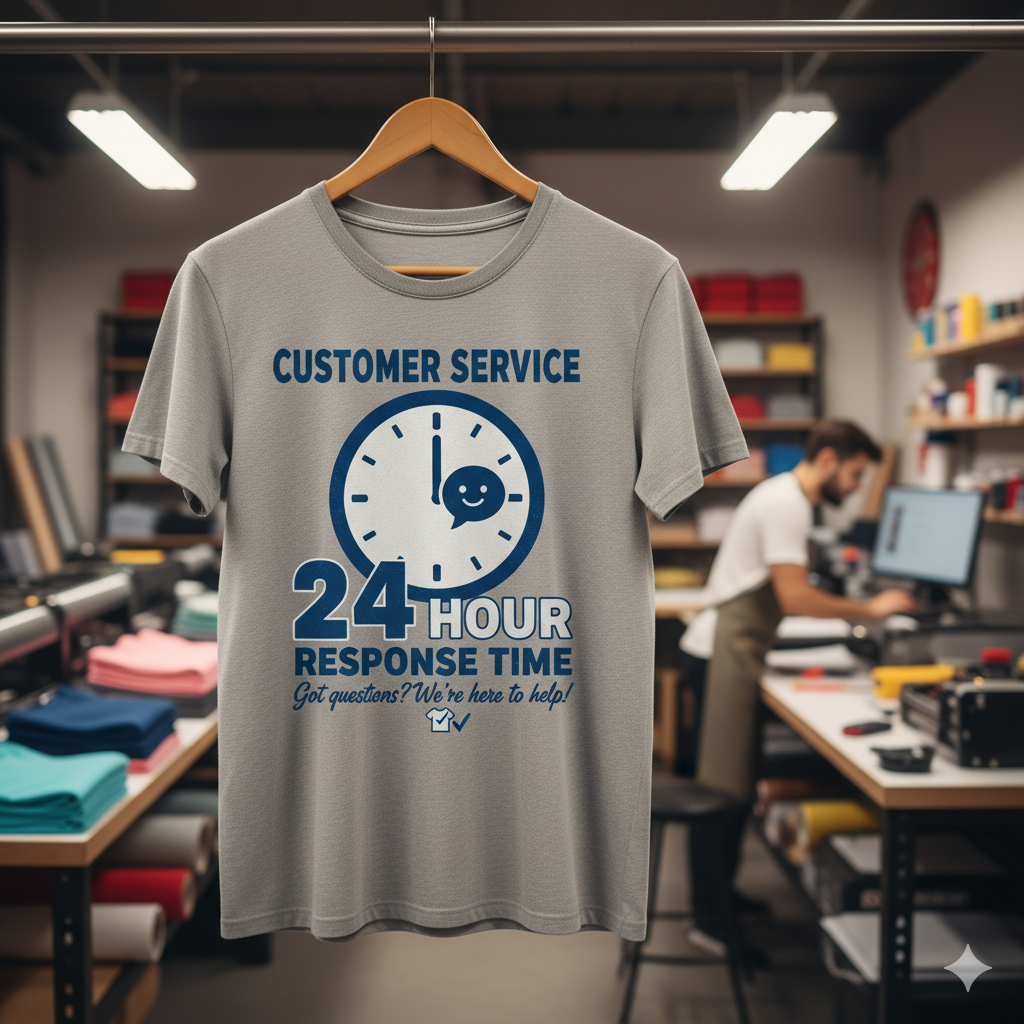
The Downsides Nobody Talks About (But You Should Know)
Look, I’m all about the opportunity here, but let’s keep it real—the print-on-demand model isn’t perfect. Understanding the risks and downsides upfront helps you make better decisions and set realistic expectations.
Quality control can be inconsistent. Since you’re not physically handling products, you’re trusting your POD partner to maintain standards. Sometimes prints aren’t quite centered, or colors don’t match exactly what you envisioned. Order samples religiously before you start selling anything. This costs money upfront but saves you from angry customers and refund nightmares.
Margins are thinner than traditional wholesale. If you were buying 500 shirts at once, you’d pay way less per unit. The convenience of no inventory comes at a cost. This means marketing becomes even more critical because you can’t compete purely on price.
Shipping times can test customer patience. Most POD orders take 3-7 days to produce, plus shipping time. In an Amazon Prime world where people expect stuff yesterday, this can lead to “where’s my order?” anxiety. Manage expectations clearly in your store by being transparent about production and shipping times.
You have less control over the customer experience. If your POD partner messes up an order, you’re the one who looks bad, even though you didn’t personally screw it up. This is why choosing a reliable platform matters so much.
The market is getting crowded. Because the barrier to entry is so low, lots of people are jumping into this space. Standing out requires actual effort—better designs, smarter marketing, stronger branding.
None of these issues are dealbreakers. They’re just realities you should plan for. The businesses that succeed are the ones that acknowledge these challenges and build strategies around them.
Going International: Can You Sell T-Shirts Globally?
Short answer: absolutely. Longer answer: yes, but with some considerations.
Most major print-on-demand platforms have production facilities in multiple countries—typically the US, Canada, UK, EU, and Australia at a minimum. This means when someone in London orders your shirt, it gets printed and shipped from a UK facility, not flown across the Atlantic. Faster shipping, lower costs, happier customers.
Printful, for example, has fulfillment centers in North America, Europe, and Japan. Printify connects you with global print providers. This geographical reach is a huge advantage because you can sell worldwide without dealing with international shipping headaches yourself.
A few things to keep in mind for international sales:
Sizing standards differ. A US Medium isn’t always a UK Medium. Make sure your size charts are clear and accurate for different regions.
Currency and pricing matter. Should you price in USD, EUR, and GBP separately? Most platforms handle currency conversion automatically, but think about psychological pricing in different markets.
Cultural considerations can’t be ignored. A design that crushes it in the US might fall flat in Asia, or worse, be accidentally offensive. Research your markets.
The beauty of this model is that you can test international waters without committing to anything. List your designs globally, see where they get traction, and adjust your strategy accordingly.
Most Profitable T-Shirt Niches (Where the Money Actually Is)
Not all niches are created equal. Some markets are saturated with competition, while others are hungry for fresh designs and willing to pay premium prices.
Here are niches consistently performing well:
Profession-specific shirts (nurses, teachers, engineers, accountants). People love representing their careers, especially when designs speak to the specific experiences and inside jokes of their profession.
Pet lovers (especially dogs and cats). The pet market is absolutely massive, eternally passionate, and always ready to buy another shirt celebrating their furry friend.
Hobby and lifestyle communities (fishing, gaming, hiking, crafting, etc.). When people identify strongly with a hobby, they want to wear it proudly.
Sarcastic and witty text-based designs. Simple, clever sayings never go out of style. The key is making them specific to a particular audience rather than generic.
Vintage and retro aesthetics. ’80s and ’90s nostalgia continues to dominate. Think retro gaming, vintage national park posters, old-school band styles.
Motivational and inspirational messages (with a twist). Straight motivation can feel cheesy, but give it personality or edge, and people eat it up.
Niche fandoms (without violating copyright). There are passionate communities around basically everything—just make sure you’re creating original designs inspired by interests rather than ripping off copyrighted material.
The real money is in finding underserved sub-niches. Instead of “shirts for dog lovers,” think “shirts for German Shepherd rescue volunteers.” The more specific you get, the less competition you face and the more your marketing resonates.
Eco-Friendly Print-On-Demand (Because People Care About This Now)
Sustainability isn’t just a buzzword anymore—it’s a genuine purchasing factor for a growing segment of consumers. If you can authentically position your t-shirt business as eco-friendly, it becomes a competitive advantage.
Printful offers organic cotton options and eco-friendly packaging. Printify connects you with print providers specifically focused on sustainable practices. Highlight these details in your marketing if you go this route.
Things to look for in eco-friendly t-shirt dropshipping:
- Organic cotton or recycled materials
- Water-based inks instead of plastisol
- Carbon-neutral shipping options
- Minimal packaging with recycled materials
- Ethical manufacturing certifications
The catch is that sustainable options typically cost more, which means either thinner margins or higher prices. But if your target audience values sustainability (and many do), they’ll gladly pay a premium for products that align with their values.
Don’t greenwash. If you’re going to market yourself as eco-friendly, actually be eco-friendly. People can smell bullshit a mile away, and getting called out for fake sustainability claims can destroy your brand reputation overnight.
Advanced Strategies Once You’ve Got Momentum
Once you’ve made your first sales and validated that your designs resonate with an audience, it’s time to level up.
Build a brand, not just a store. The difference between someone who makes a few hundred bucks and someone who builds a six-figure business often comes down to branding. Develop a consistent visual identity, brand voice, and message that makes you memorable and different.
Expand your product line strategically. Once t-shirts are working, test hoodies, tank tops, tote bags, phone cases—whatever makes sense for your audience. More products mean more ways to monetize the same customer base.
Create limited edition drops. Scarcity drives desire. Release special designs available only for a short window, and watch people jump on them. This creates urgency and FOMO (fear of missing out) that can seriously boost sales.
Build an email list from day one, even if you’re only getting one signup per day. These are people who’ve raised their hands and said they’re interested in what you’re doing. Nurture this list with valuable content, and you’ve got a direct line to customers without paying Zuckerberg for the privilege.
Consider influencer partnerships. Find micro-influencers (10k-100k followers) in your niche and offer them affiliate commissions or free products in exchange for promotion. This can be way more cost-effective than paid ads.
Leverage user-generated content. When customers post photos wearing your shirts, that’s pure marketing gold. Repost it (with permission), feature it on your store, use it in ads. Real people wearing your designs is infinitely more convincing than mockups.
Test, measure, refine, repeat. The successful t-shirt businesses aren’t the ones who got lucky with their first design—they’re the ones who constantly test new concepts, measure what works, kill what doesn’t, and double down on winners.
Common Mistakes That Will Tank Your T-Shirt Business
Let me save you some pain by highlighting the mistakes I see over and over:
Copying successful designs. Yes, that shirt is selling well for someone else. No, you shouldn’t just recreate it with minor changes. Besides being ethically questionable and potentially illegal, customers can smell a knockoff. Create something original.
Ignoring copyright and trademark law. You cannot use Disney characters. You cannot use Nike’s swoosh. You cannot print Taylor Swift lyrics without permission. The POD platforms will reject these designs anyway, but even if something slips through, you’re risking legal trouble that could destroy your business.
Setting prices too low. Racing to the bottom on price is a losing strategy. You can’t compete with mega-corporations on price, and cheap pricing often signals cheap quality. Price your products fairly and let quality and design be your differentiators.
Giving up too soon. Most people quit after their first week with zero sales. The businesses that succeed are the ones that stick with it, learn from what doesn’t work, and keep improving. Give yourself at least 3-6 months of consistent effort before deciding this isn’t for you.
Not ordering samples. You absolutely must order and inspect your own products before selling them to customers. Colors might look different in real life, sizing might run small or large, and print quality might not meet your standards. Catch these issues before your customers do.
Neglecting customer service. Even if 95% of orders go smoothly, the 5% that don’t require your attention. Ignoring customer complaints or being defensive when things go wrong will kill your reputation fast. Own the problems and fix them.
Relying on just one traffic source. If Instagram is your only marketing channel and the algorithm changes tomorrow, your business is toast. Diversify how you get customers—social media, email, ads, SEO, partnerships.
Your Action Plan: Starting Today
Alright, enough theory. Here’s exactly what to do right now if you’re serious about launching your t-shirt business:
This week:
- Choose your POD platform (I recommend Printful or Printify for beginners)
- Set up your store (Shopify, Etsy, or Teespring)
- Research your niche thoroughly—spend at least 5 hours looking at what’s selling
- Create 3-5 initial designs or hire a designer to bring your concepts to life
Week two:
- Order samples of your designs to check quality
- Set up your social media accounts (Instagram minimum, TikTok if you’re comfortable with video)
- Create your first 10-15 social media posts showcasing your designs
- Launch your store and list your products
Month one:
- Post consistently on social media (daily if possible, minimum 4x per week)
- Engage authentically with potential customers in your niche
- Make your first sales (even if it’s just to friends initially to test the process)
- Gather feedback and refine based on real customer responses
Month two and beyond:
- Analyze what’s working and double down on it
- Create more designs based on what’s resonating
- Test paid advertising with a small budget ($5-10/day)
- Start building your email list
- Refine your processes and scale what’s working
The key is taking action. Every successful t-shirt business started exactly where you are right now—with an idea and a decision to actually do something about it.
Here’s a simple checklist to get your print-on-demand t-shirt business up and running — clear, step-by-step, and easy to follow 👕💰
🧠 Step 1: Plan Your Business
- Pick a niche (funny quotes, fitness, side hustles, pets, etc.)
- Brainstorm 10–20 shirt ideas
- Research what’s already selling (use Etsy, Redbubble, or Pinterest)
- Decide on your business name
🎨 Step 2: Create Your Designs
- Use Canva, Photoshop, or Kittl to make simple, bold designs
- Stick with easy-to-read fonts and limited colors
- Check trademarked phrases using USPTO or TMHunt
- Save files as high-quality PNGs with transparent backgrounds
🛍️ Step 3: Choose a Platform
- Pick your main store platform:
- Shopify (custom store)
- Etsy (marketplace traffic)
- Redbubble or TeePublic (hands-off option)
- Connect to a print provider like Printful, Printify, or Gelato
⚙️ Step 4: Set Up Your Store
- Upload 5–10 designs to start
- Write catchy product titles and descriptions
- Set profit margins (aim for $8–$15 per shirt)
- Order a sample to check quality
💳 Step 5: Handle the Business Basics
- Create a logo and brand identity
- Set up your payment processor (PayPal, Stripe, etc.)
- Register your business name (optional but recommended)
- Track expenses and profits (Google Sheets or QuickBooks)
📢 Step 6: Market Your Shirts
- Create social media profiles (Instagram, TikTok, Pinterest)
- Post mockups, lifestyle pics, and short videos
- Run small Facebook or TikTok ads
- Ask friends/followers for feedback and reviews
🔁 Step 7: Scale and Optimize
- See which designs sell best
- Make more designs in that style/niche
- Test different price points and ad creatives
- Build an email list for repeat buyers
Final Thoughts: Is This Actually Worth Your Time?
Look, I’m not going to promise you’ll be a millionaire in six months. Anyone who does is lying. But can you build a legitimate side income or even a full-time business selling t-shirts online without inventory? Absolutely.
The beauty of this model is that the risk is minimal. You’re not betting your life savings on a pallet of inventory. You’re testing ideas, learning what resonates with customers, and building a business gradually. If a design doesn’t work, you move on. If one crushes it, you create more like it.
What makes someone successful in this space isn’t some secret hack or insider knowledge. It’s a consistent effort, willingness to learn from mistakes, genuine creativity, and treating it like the real business it is.
The tools are all there. The platforms exist. The market is massive and constantly buying. The question is just whether you’re willing to put in the work to make it happen.
So yeah, making money selling t-shirts online without inventory is absolutely legit. It’s not easy (nothing worth doing is), but it’s achievable for anyone willing to get creative, market intelligently, and stick with it through the initial learning curve.
Now stop reading and start creating. Your first customer is out there waiting to discover your designs—but they can’t buy what doesn’t exist yet.
Ready to launch your print-on-demand t-shirt business? Start by choosing a platform, creating your first three designs, and setting up your store this week. The best time to start was yesterday. The second-best time is right now.
